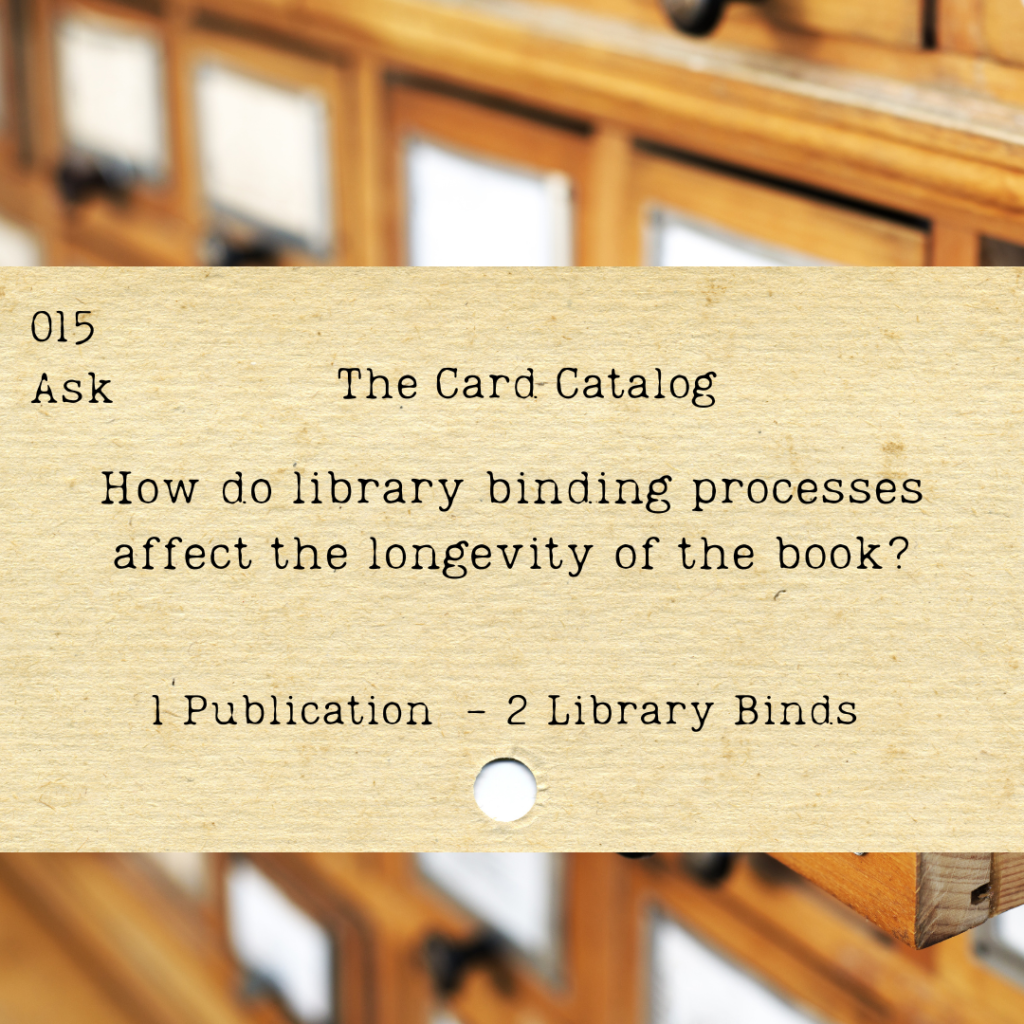
From Kathy Twitchell, Librarian at Literary Lantern Bearers in Kingfield, Maine.
Generally speaking, a vintage book was designed to be read dozens of times, if not hundreds. However, there are indeed many variables that affect the longevity of the book. Let’s look at just a few at this point.
HARDCOVER versus PAPERBACK:
In the past, the hollow back sewn bindings of Hardcover books were typically very durable. Paperbacks just weren’t designed for the same longevity. The pages in a Paperback were glued directly to the spine, resulting in creases to the spine every time the book was read.
At one point, the term “library binding” was not used for hardcovers at all, as the books were almost all marketed as suitable for library use. So, in one sense, it used to be that all hardcover books had library bindings! This specific designation will only be found in books that are maybe less than 30 years old. If it’s older than probably 1990-2000, it will often be a durable library binding edition without necessarily saying so. An exception to this would be Book Club Editions.
Book club editions were often smaller in size and sometimes cheaper in quality. Weekly Reader, Book of the Month Club, and the People’s Book Club are all examples of long running book clubs, as was The Literary Guild and Junior Literary Guild/ now Junior Library Guild. This last club in particular was notable for frequently choosing excellent writing. Eventually they marketed mostly to libraries, so their bindings are also usually durable.
Somewhere around 2000, publisher’s terms were standardized to distinguish those books designed for the school and library market versus those designed for individual or family only use. In books printed in the last 20 or 30 years, one can often see two different ISBNs for a specific title, showing the difference in print quality. Books marketed to libraries are usually designed for heavy use and the price reflects this; they’re more expensive to purchase new.
There is some confusing vocabulary these days. A “library binding” is not the same thing as a “library rebound” book.
LIBRARY BINDING – Because this term signifies a hardcover copy with extra reinforcement, I aim for these in my library. Designed for use in the public and school library systems, you’ll find these copies to be more durable, and I always chose this option if possible and affordable. (Note that a hardcover printed for a school book club, for example, is less durable by design, making them more economical but not as long lasting.)
LIBRARY REBOUND – A rebound copy is becoming less common in our modern age. Once upon a time, libraries sent books off to be rebound on a regular basis. The original hardcover book was so well-loved, and considered so valuable, that the library paid to have a new cover and binding added to the book’s page block, so the story could be circulated for many more years to come. The process wasn’t cheap, but it was less expensive than buying a new replacement copy.
The library rebounds have a huge durability factor which makes them very attractive to me, even if the cover isn’t as pretty as the original book. Libraries were sending books to be rebound as late as 1990; I don’t think that is a very common practice any more. We now live in the era of cheap, disposable books – which is both a blessing and a curse.
https://bindery.berkeley.edu/…/library-binding-vs…
Just to make things more complicated, sometime around 1980 someone invented Turtleback or Permabound Books. These editions are literally less expensive but also a lower quality than hardcover copies. Some used book sellers (like Thriftbooks) mistakenly call these editions a “School & Library Binding,” but that just muddies the waters. These are indeed marketed to schools, most often when complete classroom sets of a book are required (25-100 copies). But these are not actually library binding hardcover editions; they are paperbacks in a hard shell (hence the Turtleback brand). This means that paperback text blocks are inserted into a hardcover binding to increase longevity. In the end, though, the pages are subject to deterioration like any mass market paperback.